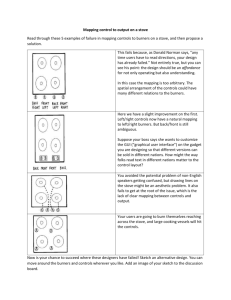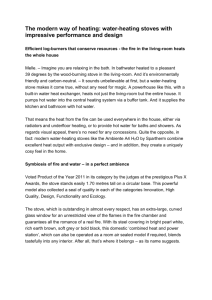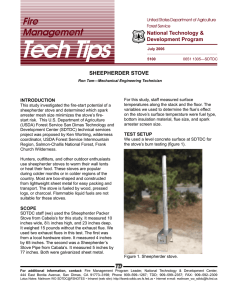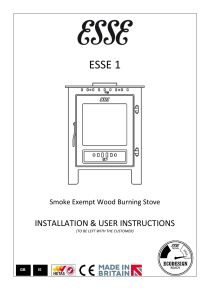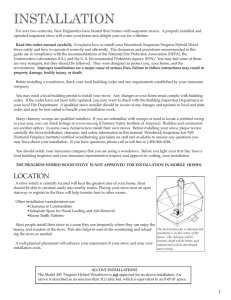Keeping Warm during Winter Power Outages
advertisement
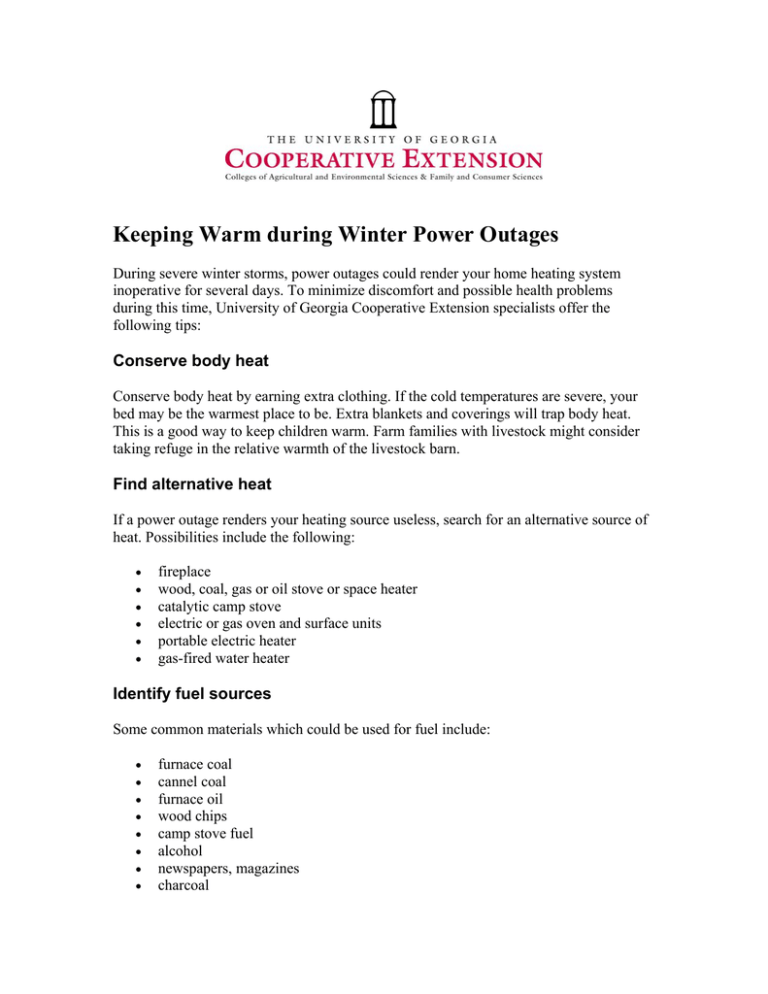
Keeping Warm during Winter Power Outages During severe winter storms, power outages could render your home heating system inoperative for several days. To minimize discomfort and possible health problems during this time, University of Georgia Cooperative Extension specialists offer the following tips: Conserve body heat Conserve body heat by earning extra clothing. If the cold temperatures are severe, your bed may be the warmest place to be. Extra blankets and coverings will trap body heat. This is a good way to keep children warm. Farm families with livestock might consider taking refuge in the relative warmth of the livestock barn. Find alternative heat If a power outage renders your heating source useless, search for an alternative source of heat. Possibilities include the following: • • • • • • fireplace wood, coal, gas or oil stove or space heater catalytic camp stove electric or gas oven and surface units portable electric heater gas-fired water heater Identify fuel sources Some common materials which could be used for fuel include: • • • • • • • • furnace coal cannel coal furnace oil wood chips camp stove fuel alcohol newspapers, magazines charcoal • • • • • lighter fluid kerosene, gasoline straw firewood corncobs Coal can be burned in a fireplace or stove if you make a grate to hold it. This will allow air to circulate underneath. Hardware cloth screening placed on a standard wood grate can be used to keep coal from falling through. Tightly rolled newspapers and magazines can be used as paper "logs" Before burning these makeshift "logs," stack them properly to allow for air circulation. If the heating situation becomes critical, furniture can be used as a source of burning wood. CAUTION: Do not store fuels in the heated area because of fire danger, especially if highly combustible materials such as gasoline or kerosene or present. Heat one room To increase efficiency of available heat, close off all rooms except the one to be heated. When selecting a room or area to be heated, consider the following: • If using a vented stove or space heater, select a room with a stove or chimney flue. • Confine emergency heat to a small area. • Select a room on the "warm" side of the house, away from prevailing winds. Avoid rooms with large windows or uninsulated walls. Interior bathrooms probably have the lowest air leakage and heat loss. Your basement may actual be a warm place in cold weather because the earth acts as insulation and minimizes heat loss. • Isolate the room from the rest of the house by keeping doors closed, hanging bedding or heavy drapes over entryways, or erecting temporary partitions of cardboard or plywood. • Hang drapes, bedding, or shower curtains over doors and windows, especially at night. Follow safety rules Safety is of prime importance in a heating emergency. Your chances of freezing to death in your home are small. Fire, asphyxiation from lack of oxygen and carbon monoxide poisoning are much greater dangers. Follow these tips to keep your family safe: • Do not burn anything larger than candles inside your home without providing adequate ventilation to the outside. All heaters (except electric) should be vented. Connect the stove pipe to a chimney flue if at all possible. (Many older homes have capped pipe thimbles in rooms once heated by stoves.) Or hook up your stove to the flue entrance of the non-functioning furnace pipe (after removing the pipe). Sometimes a stove pipe can be extended through a window if no other alternative exists. Replace the window glass with a metal sheet, and run the temporary stove pipe through the metal. • Do not run emergency stove piping close to flammable materials. Be particularly careful with window-mounted flues. Sashes, curtains and shades are especially flammable. • If you use a catalytic or unvented heater, provide plenty of ventilation in the room. Whenever the device is in use, cross ventilate by opening a window an inch on each side of the room. It is better to let in some cold air than to run the risk of carbon monoxide poisoning. • Do not burn outdoor barbeque materials such as charcoal briquettes inside, even in a fireplace. • Do not try to use bottled gas in natural gas appliances, unless you have converted the appliances for such use. Flues and piping suitable for gas burning appliances may be unsafe for use with higher temperature oil, coal or wood smoke. • Designate one person as a fire watch whenever alternative heat sources are used. One person should stay awake to watch for fire and to make sure ventilation is adequate. If the fire watch feels drowsy, it may be a sign of inadequate ventilation. • Keep firefighting materials on hand. These may include dry powder, fire extinguishers, tarps or heavy blankets, sand, salt, baking soda and water.

